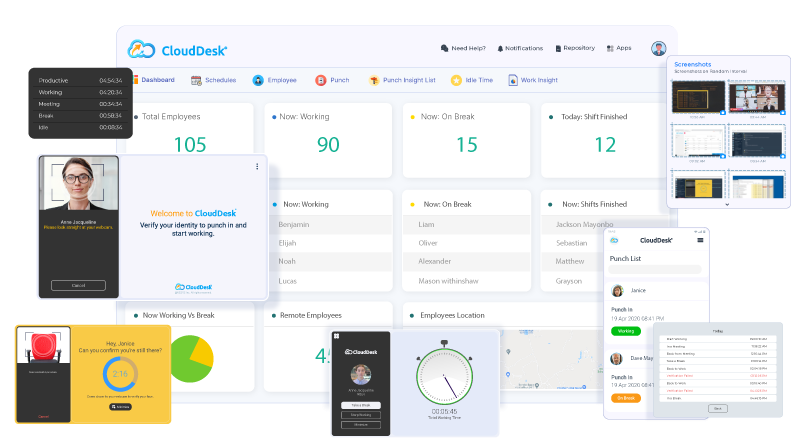5 Tips For Better Communication With Remote Teams
How do you keep remote employees engaged in their work?
It’s a question that many leaders are thinking about in this new world where more and more people are working remotely.
Communication is the most critical and challenging part of a successful remote team. The communication needs and priorities of a virtual team are different. As a manager, you need to communicate well with a distributed team.
First, let’s look at why communication is different for remote teams and what you should do.
The Importance of Communication in Remote Teams
Working in an office allows employees to communicate in multiple ways. There are many more chances to talk, discuss and watch in the office. There are a lot of tools and infrastructure facilities that make it easier for employees on the team to communicate with each other. They also know how to make the most of an office.
Your employees can see and talk to each other every day at work, which helps them build better co-working relationships. Team meetings are a great way to connect and bond because employees talk more about mutual interests than just their work.
Meeting rooms with whiteboards and projectors make it easier for employees to talk to their coworkers. You can plan events for your team to help them bond. Then there is a water cooler and a pantry where people can talk about anything. Your team will have a lot of fun at the office because they can hang out with each other.
Now, think about how your team works from a distributed location. They don’t get to see each other or meet each other. Remote teams don’t feel as connected as a team in the office. Team members may live in different time zones, making it hard to set working hours for everyone.
The speed of communication is also different in virtual teams. Messages that aren’t answered right away can make employees think twice about what they said or did not say. It can cause anxiety and a lack of trust with coworkers. Remote teams need to have different mindsets, processes, and tools to communicate well.
So, how do you deal with these problems when you are managing a remote team? People can do the five things we talked about in this post:
- Switch To Video Calls: Switching to video calls is the most practical way to improve communication with a distributed team. The distance between team members plays a vital role and has a more significant impact on the long-term performance of your remote team. This is where video communication comes to the rescue as it helps remote team members connect to build a deep, long-lasting bonding and interdependency. In a conference call, it’s hard to get to know and bond with people who don’t have faces. The trust and emotional connection that video calls help build are vital as it provides remote team members the ability to work together.

- Increase Team Productivity With Remote Employee Monitoring Software: Managing your employees the right way is a challenging task in remote work. Since employees work from multiple locations, tracking tasks and productivity becomes a big challenge. Checking employees’ work manually or via one-to-one call would eat up all your time. That is where you should consider investing in remote employee monitoring software to watch employee work activity from a remote location. It will always help you to know who is doing best and who needs extra help. Instead of hourly updates or communication you can watch their entire work day activity without micromanagement and help them remain productive during working hours. With this employee monitoring software solution, you can monitor how employees work, track their time and get work reports
- Embrace Daily Meetings: As employees are working from home, we have to make sure that we communicate well with each other effectively. While managing a remote team, all your team members must be well connected, and to do so, it is a good idea to set a daily meeting at everyone’s convenience. It will help team members share updates on work and get quick updates about the rest of the other team members.
- Build a Culture of Feedback for your Remote Team: When employees work in the same place every day, they get used to seeing their managers and coworkers. There are times when they talk with them and share their feedback. They also use their communication skills to determine what the people on their team think about them. When your employees work from home, on the other hand, they don’t get those critical signals. To improve their morale, you need to build a feedback culture and teach them how to communicate effectively.
- Try Team Building Activities: Working from home can be lonely, but it isn’t the only problem. It makes employees less engaged, less productive or even gets rid of them. Loneliness can also make some people do things that they don’t normally do. The only way to obtain rid of loneliness is to build personal and social bonds with your team. By talking to other people, team members can better communicate, talk about problems, and find solutions to problems before they get too big. In the same way that there are team-building activities for people who work in an office, there are activities for people who work in virtual teams. You can use a corporate wellness app to try out fun activities with your team that isn’t in the same place as you are.
Finally, as a manager, you need to know what your remote team has and how to fix it. Implementing the tips above will help you make it easier for a remote team to communicate effectively, boost their morale, and make them more likely to stay with you in the long run.


